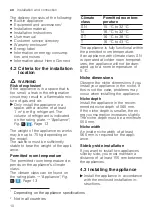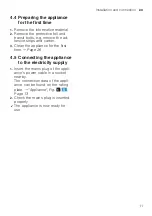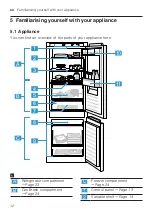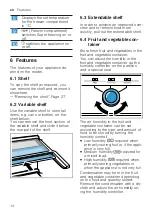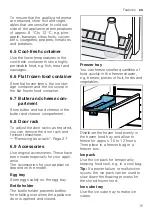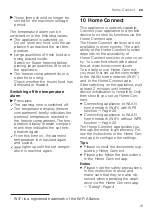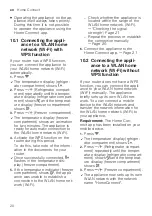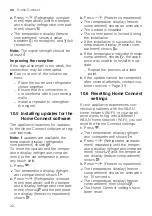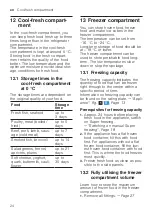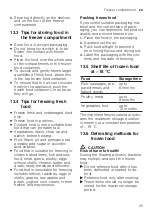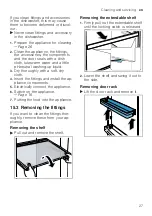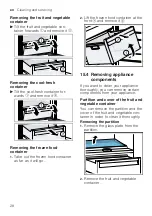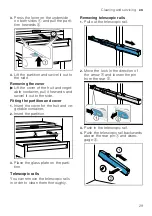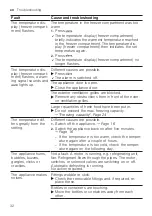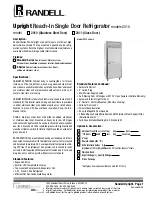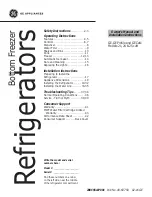
Refrigerator compartment
en
23
10.7 Data protection
Please see the information on data
protection.
The first time your appliance is
registered on a home network
connected to the Internet, your
appliance will transmit the following
types of data to the Home Connect
server (initial registration):
¡
Unique appliance identification
(consisting of appliance codes as
well as the MAC address of the
Wi-Fi communication module in-
stalled).
¡
Security certificate of the Wi-Fi
communication module (to ensure
a secure data connection).
¡
The current software and hardware
version of your appliance.
¡
Status of any previous reset to
factory settings.
This initial registration prepares the
Home Connect functions for use and
is only required when you want to
use the Home Connect functions for
the first time.
Note:
Please note that the
Home Connect functions can only be
utilised with the Home Connect app.
Information on data protection can be
retrieved in the Home Connect app.
Refrigerator compartment
11 Refrigerator compart-
ment
Refrigerator compartment
You can keep dairy products, eggs,
prepared meals, pastries, open pre-
serves and hard cheese in the refri-
gerator compartment.
The temperature can be set from
3 °C to 8 °C.
The refrigerator compartment can
also be used to store highly perish-
able foods in the short to medium
term. The lower the selected temper-
ature, the longer the food remains
fresh.
11.1 Tips for storing food in
the refrigerator compart-
ment
¡
Only store food when fresh and
undamaged.
¡
Store food covered or in air-tight
packaging.
¡
Allow hot food and drinks to cool
down first before placing in the ap-
pliance.
¡
Observe the best-before date or
use-by date specified by the manu-
facturer.
11.2 Chill zones in the refri-
gerator compartment
The air circulation in the refrigerator
compartment creates different chill
zones.
Coldest zone
The coldest zone is on the partition
and in the door rack for large bottles.
Tip:
Store highly perishable food
such as fish, sausages and meat in
the cool-fresh compartment.
→
Warmest zone
The warmest zone is at the very top
of the door.
Tip:
Store food that does not spoil
easily in the warmest zone, e.g. hard
cheese and butter. Cheese can then
continue to release its aroma and the
butter will still be easy to spread.


